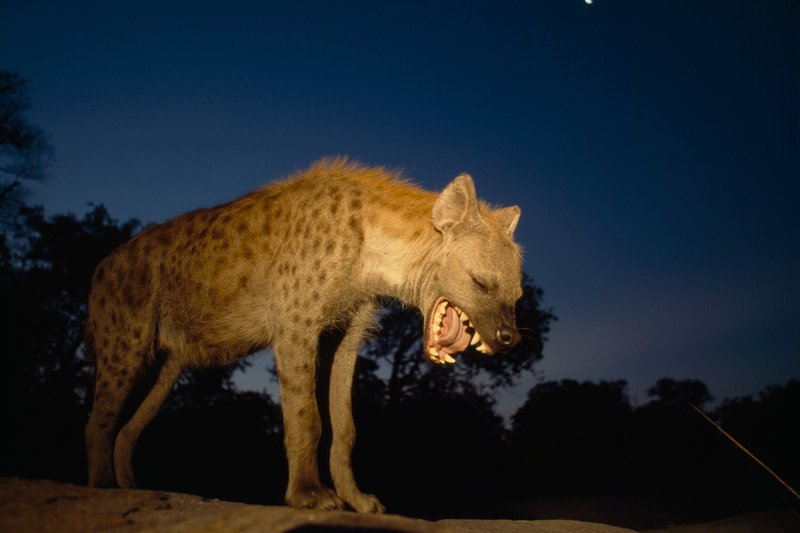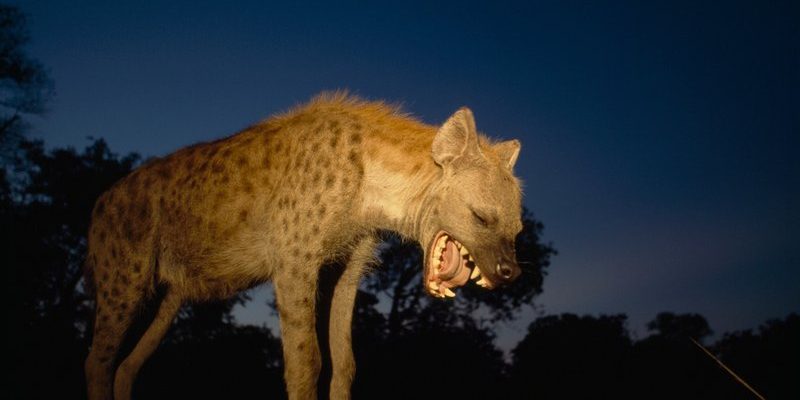
The reality is that spotted hyenas play a crucial role in their ecosystems. They’re not just scavengers or villains in a story; they have a complex social hierarchy, intelligent behaviors, and an important role in their environment. So, let’s dive into some common myths and misconceptions about them, and hopefully, by the end, you’ll have a newfound appreciation for these unique animals.
Myth 1: Hyenas Are Just Scavengers
You might be surprised to learn that while spotted hyenas do scavenge, they are also skilled hunters. Many people believe that hyenas only wait for other predators to leave their kills before swooping in. This isn’t entirely accurate.
In fact, spotted hyenas hunt in packs and can take down prey much larger than themselves, including wildebeest and zebras. They have incredible stamina and can run for miles, wearing down their quarry before moving in for the kill. Think of them as the marathon runners of the animal kingdom—persistence and teamwork are key.
They also have an excellent sense of smell and hearing, which allows them to track their prey efficiently. So, while they might scavenge when the opportunity arises, they’re just as likely to be the ones making the kill.
Myth 2: Hyenas Laugh Because They’re Happy
Here’s a fun fact: hyenas actually don’t laugh because they’re happy. Their vocalizations can sound a lot like laughter, which has led to misconceptions about their emotional state.
This unique vocalization, often referred to as a “whoop,” serves several purposes. First, it communicates their presence to other members of their clan. Imagine a group of friends calling out to each other at a party to be heard over the music. Secondly, they use these sounds to express distress, discomfort, or even submission.
When you hear a hyena’s laugh-like call, it might actually be a sign of nervousness or tension. So, next time someone mentions the “laughing” hyenas, you can share that it’s more about communication than joy.
Myth 3: Hyenas Are Cowardly
Another common misconception is that hyenas are cowardly animals that rely on larger predators to do their dirty work. This is far from the truth! While it’s true that they sometimes scavenge from lions or leopards, it doesn’t mean they shy away from a challenge.
In fact, spotted hyenas are known for their bravery. They often stand their ground when confronted by other predators and can even steal kills right from under a lion’s nose. Their social structure allows them to work together effectively, which gives them the upper hand in many situations.
So, the next time you think of hyenas, remember: they’re not just opportunistic scavengers; they’re fierce competitors too!
Myth 4: Hyenas Are Mean and Aggressive
It’s easy to assume that hyenas are aggressive simply because of how they’re often portrayed in popular culture. However, their social dynamics reveal a more nuanced picture. Spotted hyenas are highly social animals that live in clans often consisting of 30 to 80 individuals.
In these clans, social structure plays a crucial role. They exhibit strong bonds and complex relationships among their members, which often involve cooperative care of the young. Think of it like a close-knit community where everyone looks out for each other.
While they can indeed be aggressive when defending their territory or members of their clan, they’re generally not out looking for trouble. Like any group, they have their disagreements, but these are often resolved through social behaviors rather than outright violence.
Myth 5: Hyenas Are Not Important to Their Ecosystem
Some people might think that hyenas are just another animal in the food chain, but they actually play a vital role in their ecosystems. By scavenging, they help clean up the environment. This might sound like a small contribution, but it’s incredibly significant.
When hyenas consume carrion, they prevent the spread of disease that can occur when dead animals are left to rot. It’s like a natural cleanup crew that helps maintain the health of the ecosystem. Additionally, their hunting activities help regulate prey populations, which can prevent overgrazing and promote vegetation growth.
Their presence supports other wildlife and keeps the ecosystem balanced. So, if you ever doubted the importance of spotted hyenas, remember: they’re essential players in maintaining the health of their habitat.
Myth 6: Hyenas Are Related to Dogs
If you’ve ever looked at a hyena and thought it resembles a dog, you’re not alone. However, they are actually more closely related to cats. Surprising, right?
Despite their dog-like appearance, hyenas belong to their own family known as Hyaenidae. This makes them more closely related to animals like African civets and mongooses. In fact, their closest relatives are surprisingly felines!
When you compare the skull structure of a hyena and a cat, you’ll notice some fascinating similarities. It’s a reminder of how diverse and complex evolutionary relationships can be.
Spotted hyenas are misunderstood creatures with a host of myths clouding their true nature. They are not just scavengers, but skilled hunters with complex social lives. Their laughter isn’t a sign of happiness, and far from being cowardly, they are fierce and brave animals respected in their ecosystems.
As we continue to learn more about these fascinating creatures, it’s clear that they deserve a place of respect in the animal kingdom. So next time you see a hyena or hear someone share a common myth, you’ll be ready to enlighten them with the truth. Let’s celebrate the unique roles that all animals—especially the spotted hyena—play in our world!

